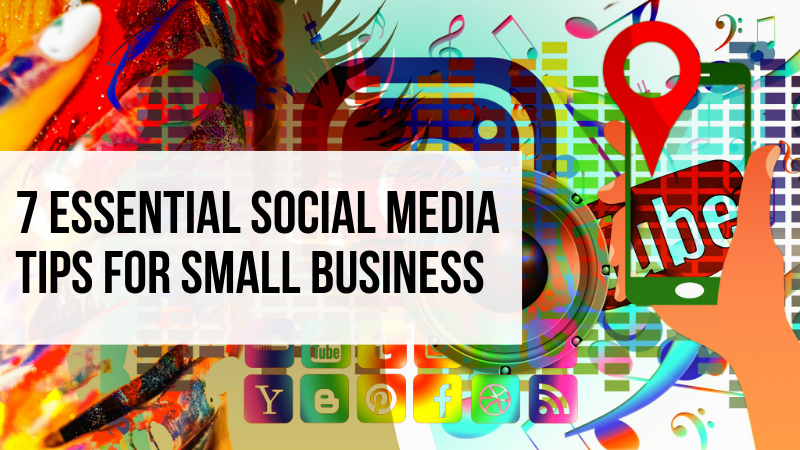Social media can be a great way for small business owners to connect with prospects and customers, considering that there are over 3.5 billion active social media users globally. when done right, social media can help small businesses increase profit.
However, small businesses are no longer competing with the bigger brands alone, they also have to figure out innovative ways to stand out from fellow small businesses. In this post, we’ll go over seven simple ways to make your business stand out on social media.
1) Know your competition
Carrying out a competitive analysis can be a great place to start. Knowing competitors who target the same or a similar audience like yours gives you a good idea of what works and what doesn’t/didn’t.
Start with brands that have the highest engagement rates. Figure out what social media platforms they are on, how frequently they post, how they engage their audience and how they promote their brand.
Remember that you should not copy what they do, the point of this exercise is only to have an idea of what they do and use the insights gained to develop your social media strategy.
2) Choose the right social media platform for your business
Social media has exploded since Facebook went public back in 2012, and new networks are seen to be popping up every now and then dedicated to any cause you can think of, this is in bid to say “all social networks are not equal”.
It’s important for businesses to identify who their target audience is and what social media platform they can be found on. For example:
- Facebook: Facebook is the largest social media platform, with over 2 billion active users. It is ideal for businesses that want to generate leads and build relationships
- Instagram: Instagram, because of its very picturesque feel, has become home to a lot of lifestyle businesses. If your business involves a lot of visuals then Instagram may be the way to go.
- LinkedIn: LinkedIn is generally a platform for business networking. It can be used by both B2B and B2C businesses to create trust, build authority, and engage their audiences
- Twitter: If your business has a majority of its audience below 50 years and you need to stay apprised of time-sensitive information like breaking news, announcements, and trending topics, then Twitter is definitely the right fit for you.
Once you determine the right platform for you, you must be intentional about being consistent on that platform
3) Have a plan
Wanting a great social media presence is all good, but it’s only the beginning. You actually have to come up with a plan on how to get to your goals. Don’t have social media goals? You should probably start there. Ask yourself “Why am I setting up a social media page?” You could have a dozen reasons like educating your audience, propagating your brand, generating leads e.t.c.
Next, you want to plan your content. Having a content calendar is a big part of your strategy because it should answer questions like:
- Who is your target audience?
- What topics and subjects are they interested in
- What content do you already have?
- What kind of content do you still need to create or curate?
- How often are you posting?
4) Include your brand identity
Social media is a part of your overall business and should be treated as such. People should get the same feeling when they are on your social media page as when they visit your website or even your physical store/office (if you have one).
Include your colours on your social media pages, share your brand message and use the same tone as you would if you were engaging them off social media.
5) Have fun with it
Look at social media as a forum where people get to interact with your brand. Do what feels natural, observe the reaction and change when you have to. It’s not okay to just sell on your platform, offer your audience value as well. If you’re a food vendor for example, how about you put out some tutorials or even a recipe?
Point is, think of innovative ways to have fun with your account and include your audience in the journey
6) Track and restrategize
Social media use is growing all the time, and your accounts should too. Social media growth is not just limited to followers but even in engagements and tags/mentions.
However, you can only do so much if you don’t know the type of content your audience wants to see and engage with. The only way to do that is by actually monitoring your account. Did you start a series that got a lot of comments and tags? How about you plan to do some more? Did they like a collaboration you did with another brand? How about you go back to your strategy board and make another one happen?
In summary, proper monitoring of your social media accounts helps you manage it better.
7) Be consistent
Social media isn’t a one time deal, it takes time and patience to cultivate a reliable presence. Therefore, you have to be consistent with it. You can use available social media tools to help reduce the time you spend creating and posting content on social media. In terms of posting frequency, the right number really depends on the platform you’re on. According to Buffer, 1-2 times per day for Facebook,5 times per day or more for Twitter and 1 time per day (Monday -Friday) on LinkedIn
Hopefully, this post sparks some ideas you can immediately implement on your social media. Remember, just like all of your other business processes, social media is a marathon and not a sprint!

